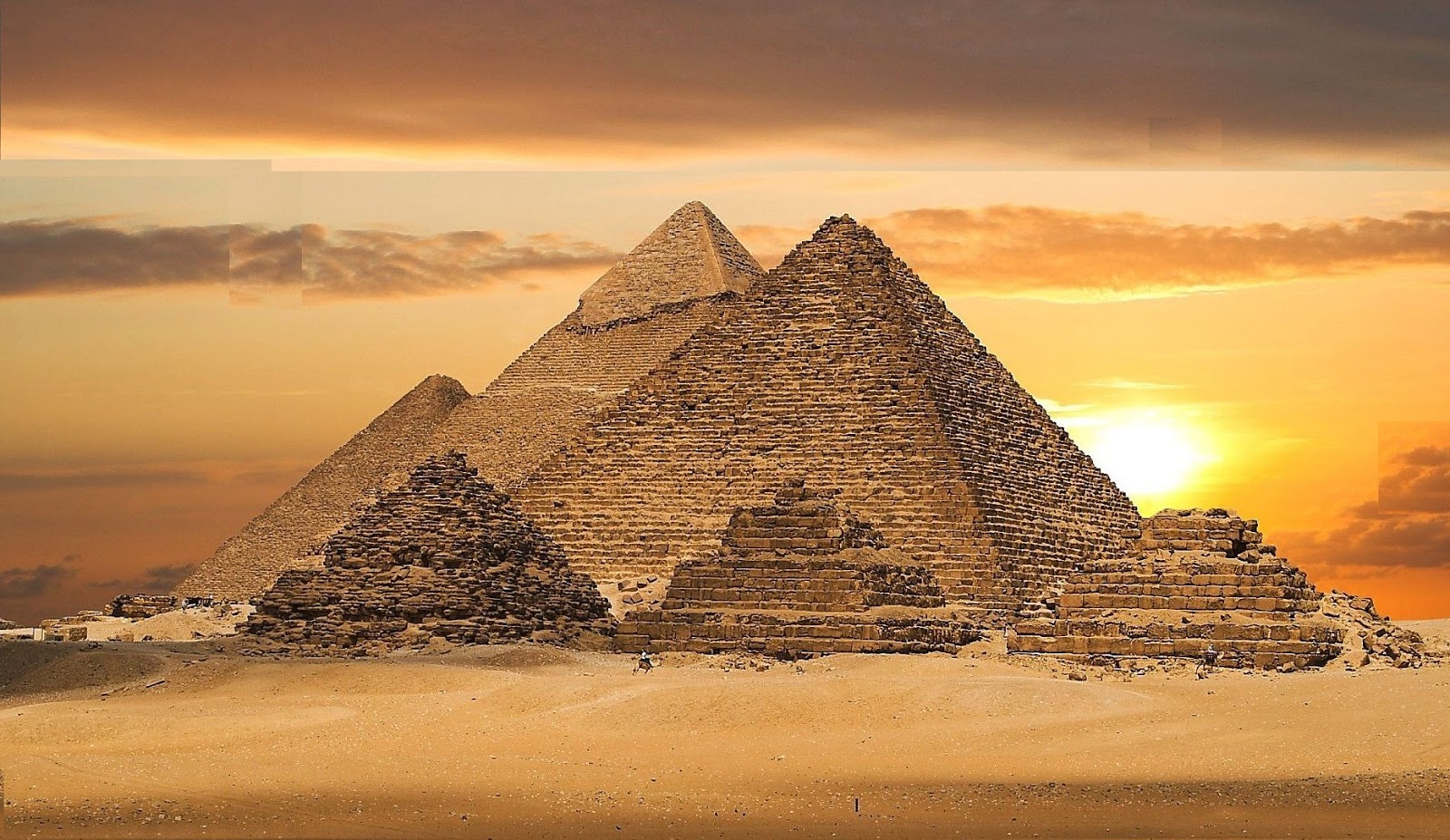Have you ever wondered what the Great Pyramids of Giza looked like when they were first built? These monumental structures, standing tall for over 4,500 years, were not always the weathered stone edifices we see today. Historical accounts and recent digital reconstructions have sparked curiosity about their original appearance, revealing that they were initially coated in brilliant white limestone and topped with gleaming gold. This article delves into the fascinating history, construction, and the enduring mystery surrounding the Great Pyramids of Giza.
In 2022, a post on Reddit showcased a digital reconstruction of the pyramids, igniting discussions about their original glory. The top image in the post depicted a polished limestone structure with a pure gold peak, while the second image showed the pyramids as they appear today, lacking much of their original splendor. This contrast has led many to question how these ancient wonders would have looked during their prime.
Recent advancements in technology, including tools like Google Lens, have allowed researchers and enthusiasts alike to explore the history of these magnificent structures. The Great Pyramids of Giza, particularly the Great Pyramid of Khufu, have been the subject of extensive study. Their construction involved approximately 2.3 million blocks of stone, weighing between 2.5 to 15 tons each, showcasing the incredible engineering skills of ancient Egyptians.
Understanding the Original Construction of the Great Pyramids
The Great Pyramids of Giza were originally clad in casing stones made from fine white Tura limestone, giving them a smooth and reflective surface. These casing stones were polished to a high shine, allowing the pyramids to gleam in the sunlight, creating a breathtaking sight for ancient viewers. Unfortunately, much of this outer layer has been removed over the centuries, leading to the rugged appearance we see today.
In addition to the white limestone, experts suggest that pyramidions, or capstones, on top of the pyramids may have been adorned with materials like gold or electrum, a natural alloy of gold and silver. This gilded finish would have added to the pyramids' grandeur, making them visible from great distances and enhancing their significance as tombs for pharaohs.
The Role of Workers in Pyramid Construction
Constructing the Great Pyramids was no small feat; it required a vast workforce. Estimates suggest that up to 100,000 skilled workers, including laborers, architects, and artists, contributed to the construction of these monumental structures. These workers lived in nearby temporary cities, where they received food, shelter, and care.
Excavations around the Giza Plateau have revealed that these workers were well-fed and organized, with evidence of a sophisticated labor system to manage the immense project. The teamwork and dedication of these individuals played a crucial role in realizing the vision of the pharaohs, turning ambitious dreams into reality.
The Historical Significance of the Pyramids
The Great Pyramids are not just architectural marvels; they are a testament to the ancient Egyptians' beliefs and practices. Built as tombs for the pharaohs, they were designed to facilitate the journey to the afterlife. The pyramids were part of a larger complex of temples, burial sites, and offerings, reflecting the Egyptians' intricate understanding of life and death.
Despite the passing of millennia, the pyramids continue to captivate the world. Their historical significance, combined with ongoing archaeological discoveries, keeps the story of ancient Egypt alive. From their construction techniques to their cultural relevance, the Great Pyramids of Giza remain a source of inspiration and intrigue for historians, archaeologists, and curious minds alike.
Exploring the Legacy of the Great Pyramids
The legacy of the Great Pyramids extends beyond their physical presence. They are symbols of human ingenuity and perseverance, representing the pinnacle of architectural achievement in the ancient world. Visitors from around the globe flock to Giza to witness these wonders firsthand, marveling at their scale and the mysteries they hold.
In recent years, the popularity of virtual tours has allowed even more people to experience the pyramids without traveling to Egypt. Digital reconstructions and interactive maps provide insights into their construction and history, ensuring that the story of the Great Pyramids continues to be shared and appreciated by future generations.
Embarking on a Digital Journey Through Ancient Egypt
For those interested in exploring the pyramids in a modern context, digital tools such as Google Maps offer virtual tours of the Giza Plateau. These interactive experiences allow users to navigate the area and appreciate the grandeur of the pyramids from the comfort of their homes. It’s a unique opportunity to connect with history in an engaging way.
As technology continues to advance, the potential to learn more about the Great Pyramids and their original splendor will only grow. Future research and innovations will likely unveil more secrets of these ancient structures, enriching our understanding of Egypt's remarkable past.
Renewed Interest in Ancient Wonders
The Great Pyramids of Giza remain a focal point for those fascinated by ancient history. As more people seek to understand the complexities of these structures, the ongoing research and discoveries surrounding them will keep the interest alive. The story of the pyramids is not just about their physical form; it's also about the culture and civilization that created them.
In conclusion, the Great Pyramids of Giza are more than just stone structures; they are a window into the ancient world, reflecting the beliefs, innovations, and aspirations of a civilization that continues to inspire us today. As we learn more about their original appearance and the people who built them, we deepen our appreciation for these timeless monuments.
- Is David Jason Muir Married
- Kim Hye Yoon Husband
- Simon Cowell Son Disability
- Daniel Jack Neeson
- Aaron Pierre
- Patrick Flueger Relationship
- Anton Lavey Daughter
- Massey Park California
- Preet Jatti
- Oprah Diddy Connection




